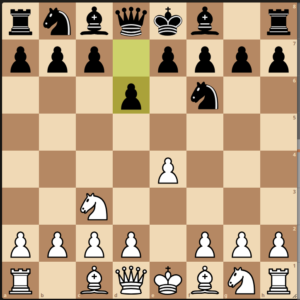Alekhine’s Defensive has been analysed since the early 19th century but was not popularised until Alexander Alekhine (1892-1946), the old world chess champion, played an advocate for this ultra-mod tip in 1921!!!
Krejcik – Gottlieb, Germany 1922
1.e4 Nf6 2.Nc3 d6

(Here most common move 2…d5)
3.Bc4 Nxe4

(expecting 4.Nxe4 d5)
4.Bxf7+ Kxf7 5.Nxe4 e5 6.Qf3 Kg8??

(Black must play 6…Ke8)
7.Ng5 ( this is 8.Qf7 mate threat) 7…Qf6 8.Qb3+ and White win by gaining a piece.
Russ – Zeh, Postal 1974
1.e4 Nf6 2.Nc3 d5 3.e5 Nfd7 4.e6!? fxe6 5.d4 c5 6.Nf3 Nc6 7.dxc5 Nxc5 8.Bb5 (now black give a blunder) g6??

[Now black overlooking White’s next move] 9.Qd4,
attacking the Rook and Knight and winning a piece
Quinteros – Goossens, 1978
1.e4 Nf6 2.Nc3 d5 3.exd5 Nxd5 4.Bc4 Nb6 5.Bb3 Nc6 6.Nf3 (now black gives a bad move) Bg4?

[ Black should try 6…e5]
7.Bxf7+! Kd7 8.Qe2 e6 9.h3 Bxf3?? 10.Qxe6# mate

[if the 7th move black gives 7…Kxf7 8.Ng5+ and 9.Qxg4]
Stock – Rades, Germany 1993
1.e4 Nf6 2.Nc3 d5 3.exd5 Nxd5 4.Bc4 Be6?! 5.Qf3 c6 6.Nge2 g6 7.Nd4 Nxc3?

[Here black better to play 7…Qd7]
- Nxe6 fxe6 9. Qxc3 Rg8 10. Bxe6 Bg7 11. Qb3 Rf8 12. Qxb7

Here white will win by gaining too many pawns. Here if black moves Nd7 then White Queen has to take c6 pawn cannot do 13. Bxd7 Qxd7 14. Qxa8 (Now White’s Queen Trapped)


